Ipoh was named after this tree… and it can probably kill you.

- 374Shares
- Facebook288
- Twitter10
- LinkedIn13
- Email22
- WhatsApp41
If you’re for some reason lost and alone in a Malaysian jungle, there are plenty of things to be scared of. The most obvious ones may be the absence of a mamak restaurant, leeches, the occasional harassment from a penunggu (guardian spirit) or a pontianak, or maybe hungry tigers or elephants.
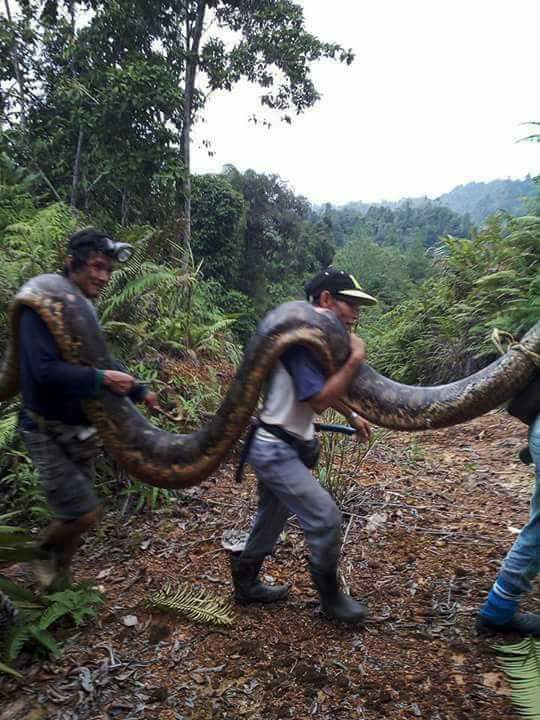
Any number of things can kill a fragile human in the wilderness, but not many people would think that trees are one of them. Unless a tree decides to fall on you, most people would barely notice the trees around them, being pretty much part of the background. Sure, eating a wrong fruit can make you laosai pretty bad, and maybe you’d twist an ankle or two by tripping on their roots while trying to outrun something more dangerous, but many people would find trees in general to be quite harmless.
As it turns out, some of the trees we can find in Malaysia are pretty deadly, and while common sense would tell us that it’s dangerous to sleep directly under a durian tree, we’ve found other trees whose danger may not be that obviously apparent. The first one would be…
1. The tree that bears the perfect murder weapon, Cerbera odollam
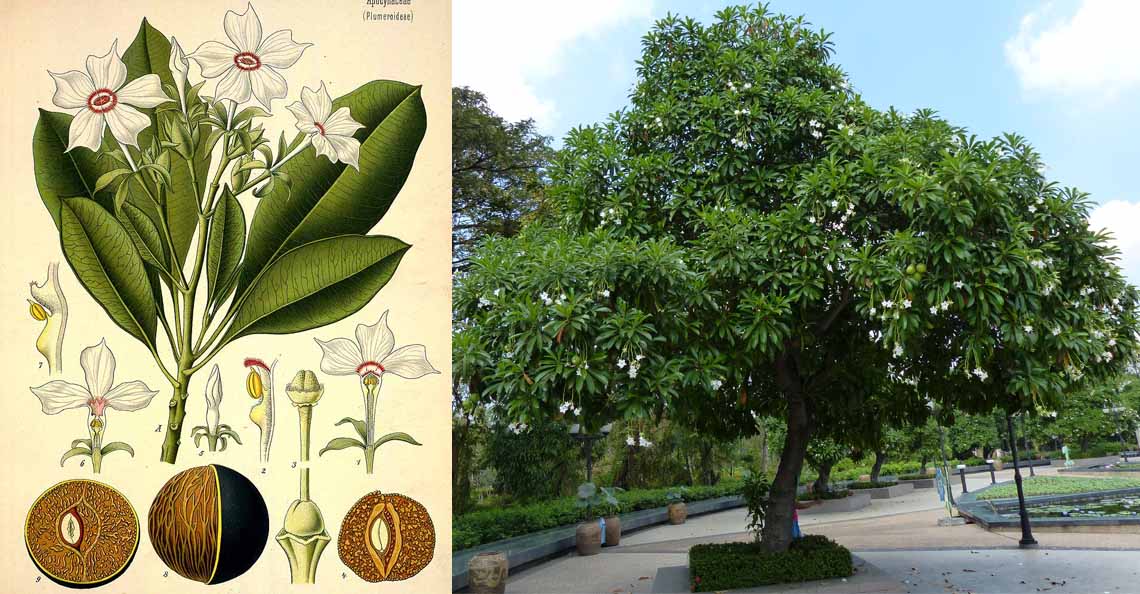
Some of you may say, “Hey, I’ve seen that tree before!”, and we’d believe that as these trees used to be a popular landscape tree in urban areas, particularly in parks and parking lots. They provide a solid shade, they have pretty white flowers, and there’s no shortage of fallen fruit, which are just the right size to throw at those dang kids hanging about your car. All around, they seem like a pretty swell tree… except their fruits are deadly poisonous.
We usually call this tree the pong-pong tree in Malaysia, but elsewhere the most common name for it is the suicide tree. Eating the seeds are a pretty popular way to off yourself, and in Kerala, India, for example, between 1989 and 1999 more than 500 people have been reported to die because of the tree, but the actual number may be a lot higher. Part of the reason why they have to resort to guess-timating the number had something to do with the kind of poison in the seeds: cerberin.
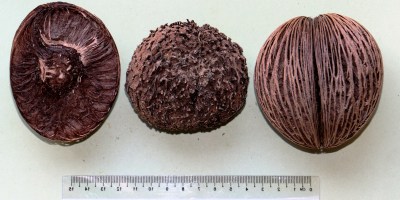
Cerberin is a kind of cardiac glycoside, which in layman terms means that it interferes with your heart’s functions if eaten, but that’s not the special thing about it. You know how sometimes bodies undergo autopsy to determine the cause of death? You can’t really detect cerberin under a standard autopsy; there has to be a special procedure for it. So unless there is evidence that the dead person had eaten the fruit before his or her death, it would seem like a standard heart attack or something.
Since the seeds can easily be ground up and added in food or drinks with strong spices to mask the taste, it is also a pretty good murder weapon. As for the dosage, people have died from eating as little as half a kernel of this fruit, so that’s pretty scary.
Welp. Moving on to the coastal area…
2. The tree that blinds you, Excoecaria agallocha
Also known as buta-buta or bebuta in Malay and the blind-your-eye mangrove in English, this tree can be found in coastal forests, near open areas and in mangrove swamps. It looks something like this:
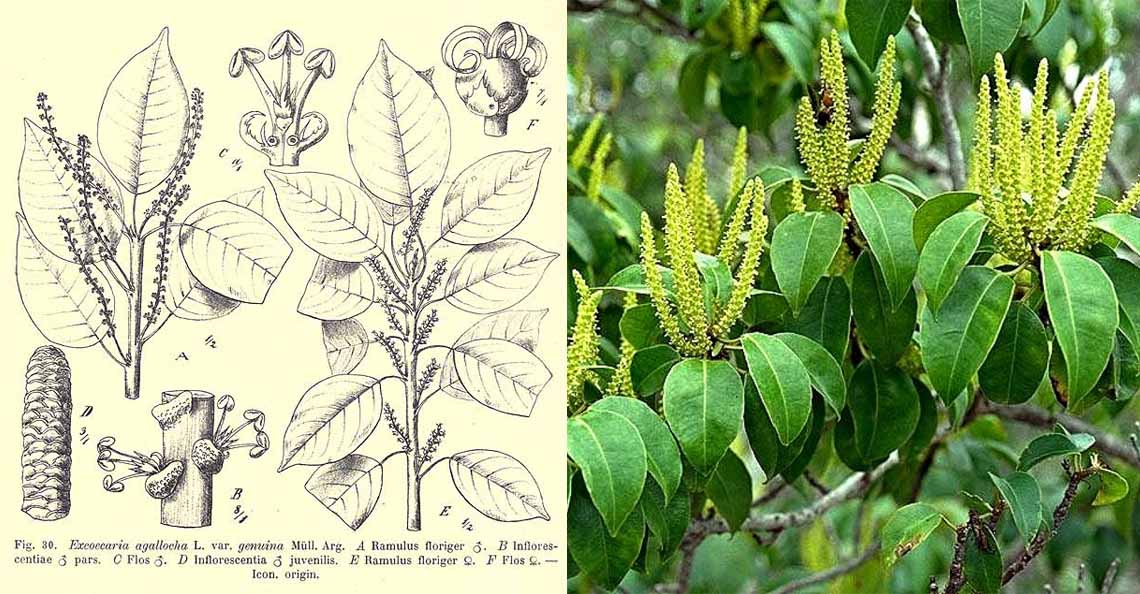
Excoecaria is approximately Latin for ‘to make blind’, so if we have to make a wild guess on what kind of tree this is based on its colorful names… we’d say that it’s a tree that’s so beautiful that it blinds people with its radiance.
No, not really. It literally blinds you with its toxic latex. Probably the earliest mention of the tree was back when an explorer named William Bligh was on an expedition to bring breadfruit (Artocarpus altilis) to the West Indies in the 1780s. When they were sailing somewhere near Tongatapu, they went ashore and saw a stand of the trees.
Bligh warned his crew to not go near the trees, as during his previous voyage with the famous explorer Captain James Cook, woodcutters sent to cut down the trees for fuel were temporarily blinded by the latex of the trees. It would seem that the woodcutters got blinded for nothing, too, as the smoke caused by burning the wood also hurts the eyes of nearby people. In a footnote, the trees were identified by their Malay name, ‘caju mata boota‘.

And if you’re thinking “Hah! I’ll just wear goggles and avenge all those eyes they blinded!”, try a hazmat suit instead. If it touches your skin, the latex can cause burning, inflammation, blistering, and in some cases permanent damage. In fact, all parts of the tree, from the leaves to the roots, are poisonous if eaten. The crushed parts of the plant can be used to poison fish, or applied to the tips of arrows and darts.
Thankfully, they’re relatively easy to tell apart from most other non-poisonous mangrove due to their lack of aerial roots, or pneumatophores, sticking out from the ground. Now get back on the bus, cause we’re heading to the home of white coffee for…
3. The tree that scared the angmohs in the past, Antiaris toxicaria
Antiaris toxicaria goes by many names, like poison tree and upas tree, but it’s commonly known here as the ipoh tree. That’s right, the town of Ipoh, Perak, is named after this tree, and if you go there keep a lookout for one special Ipoh tree near the train station. No wait, it fell down some time ago, but it has since been replanted. It used to look like this though:
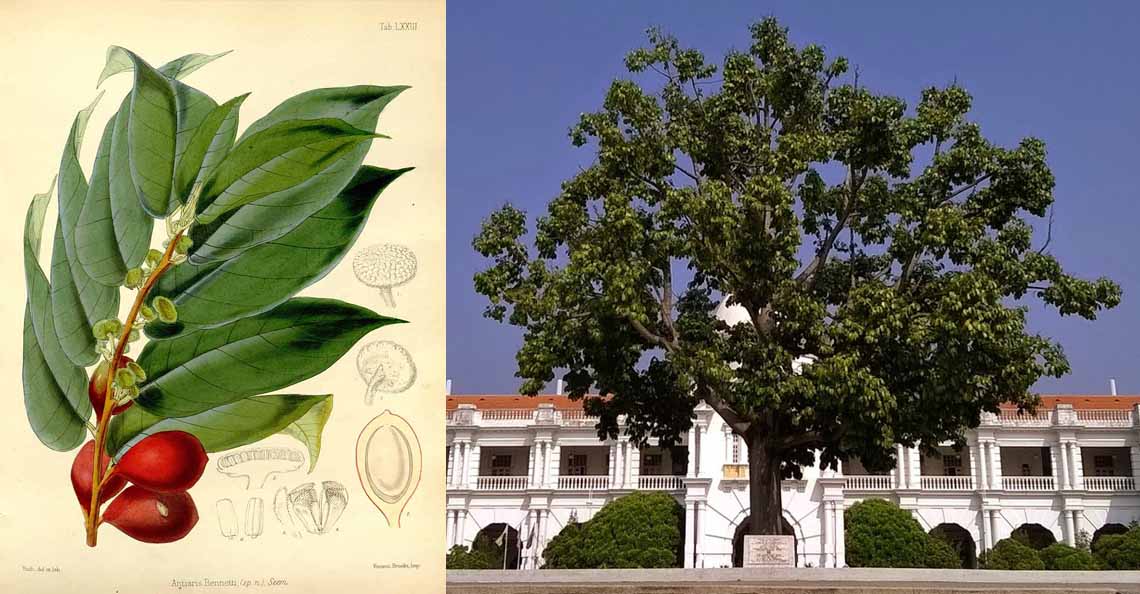
It’s kinda funny to see the tree just displayed there in the center of the city if you know of its fearful reputation in the past. Back when the Portuguese attacked Malacca, despite their fancy cannons, they were most afraid of the natives’ blowpipes. The darts were laced with a poison that killed every Portuguese soldier they hit except one, and after Malacca finally fell, more than a century passed before they figured out where the poison came from: a tree growing in deep forests.
After the initial discovery, things kinda blew out of proportion, with a German botanist named Georg Eberhard Rumphius once describing the tree like so:
“The tree grows there on bald mountains. The soil beneath it is barren and singed. The only thing that lives under it is a horned snake that cackles like a hen and by night has fiery eyes.” – Georg Everard Rumphius, as written in Anderson’s Travel Companion.
Based on his sources, to collect the poison you have to cover up from head to toe because even a single drop touching the skin would cause the body to swell. Collectors would pierce the tree with a long piece of bamboo, and the latex would flow into the bamboo and be collected. The reputation of the ipoh tree got so big that the great Russian poet Pushkin wrote a poem about it, throwing in some slave exploitation into the mix for good measure.

Much later, plant explorers managed to find the ipoh tree living quite harmoniously with other trees and animals in its habitat, and the scientific world agreed that Rumph or his source may have overreacted a bit. But the poison part is real. The latex from the tree contains cardiac glycosides that mess around with the heart, but it had to be injected directly into the bloodstream to cause any damage. On its own, the ipoh latex isn’t very deadly.
To make it deadlier, natives in the Portuguese campaign probably mixed it with the latex of…
4. The tree that makes the Joker’s laughing gas possible, Styrchnos nux-vomica
We can’t really find a local name for this tree, but it has been called the nux-vomica tree, poison nut tree, and strychnine tree, among others. It looks something like this:
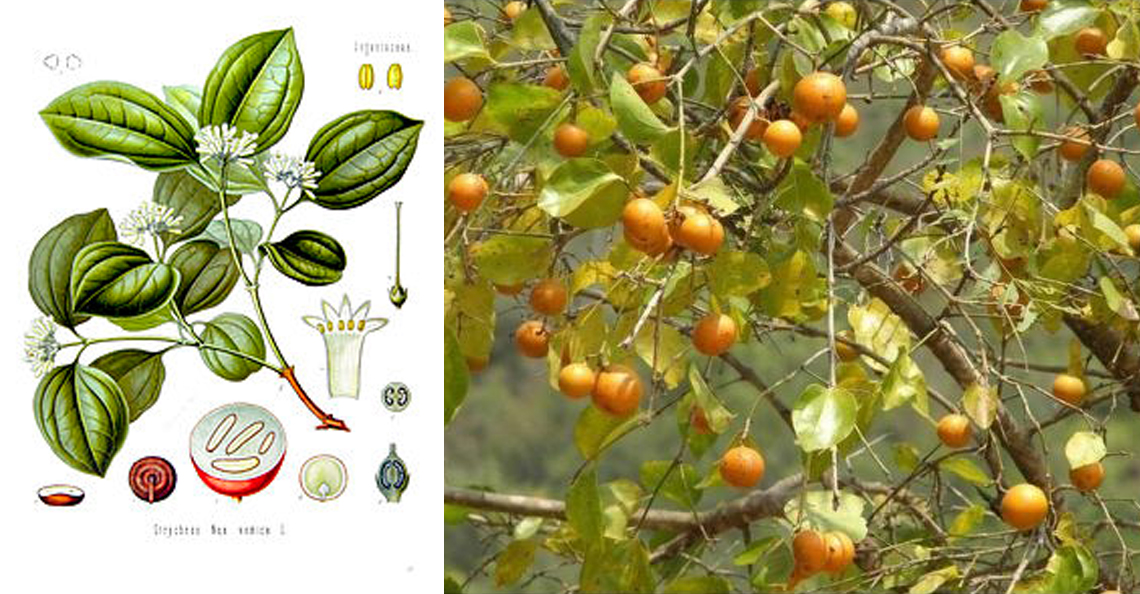
It may look like a normal tree with invitingly orange fruits… which you can eat, by the way. The fruit is described as having a white, sticky flesh that is slightly bitter, and ‘much relished by children’. But we probably won’t try it, as the seeds can give you a painful, horrifying death. They contain a poison called strychnine, which old-timey people used to use as medicine for all sorts of sicknesses and as a performance-enhancing drug until they realize that it’s, well, deadly.
Due to the dramatic, painful death it brings, strychnine is often used in works of fiction as a murder weapon, and is well known as a poison. One of the instances of strychnine in pop culture is in Batman, as a component of the Joker’s main weapon, the Joker Venom.
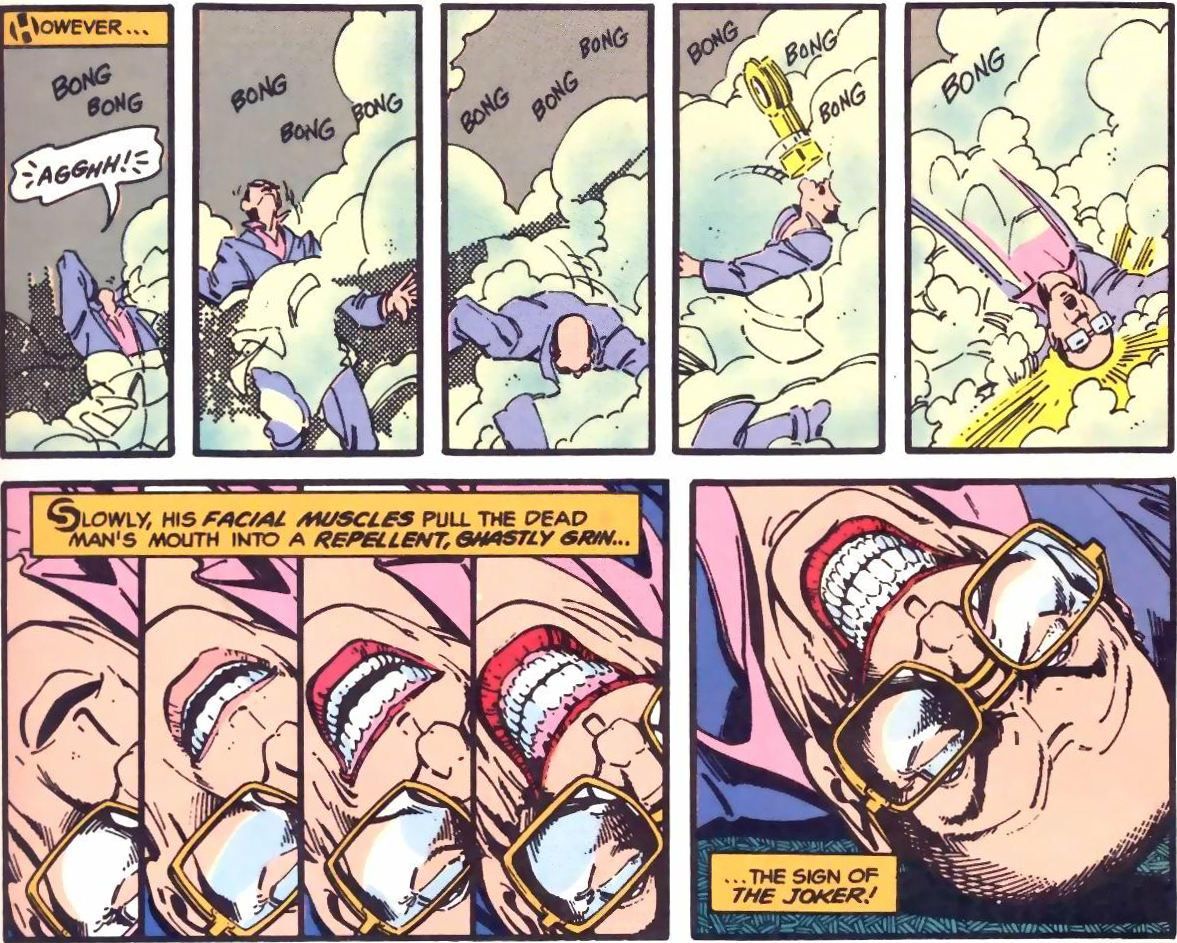
It contains a mixture of strychnine and other poisons, and when administered in the form of a gas, it causes the victims muscle to contract in such a way that the skin gets discolored and the victim’s face is frozen in a grin. And that’s almost similar to how strychnine works in real life: it interferes with the signals from your brain to your muscles, causing painful convulsions and seizures at the slightest provocation, which can lead to death by either suffocating or your heart giving out. All this happens while the mind stays clear.
So how much do you need to eat to die from it? Somewhere between 100 and 500 milligrams, which isn’t really that much.
It may be disconcerting to know that these trees can be found in the same country as us, but let’s not be hasty and put away our chainsaws for a bit, as…
Despite their deadliness, even poisonous trees can save lives
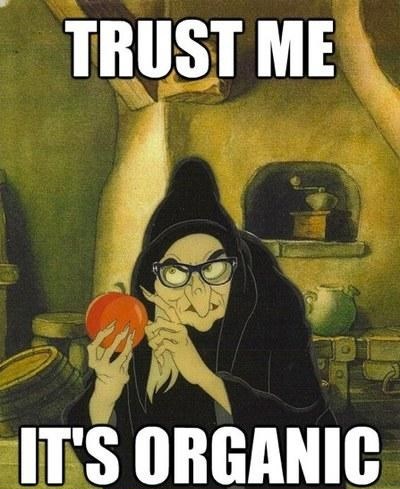
As scary as these trees are, we’re barely scratching the surface of what’s possible with trees that we can find in our own country in this article. While the trees we mentioned do have the potential to kill or cause serious harm to people, the chemicals they make can also be used for good. Cardiac glycosides, like cerberin (from the suicide tree) and ones from the ipoh tree, may cause problems to the heart, but they have also been used to treat heart conditions like heart failure and arrhythmia.
While the latex from the blinding mangrove may harm the eyes and skin, it is also used traditionally to treat ulcers, sores, and marine animal stings, and as a kind of ubat kuat, among other things. So you can probably see that even the most unassuming, poisonous plants can be beneficial, but in case you still can’t yet, here’s one last example. Have you noticed that the National Cancer Council of Malaysia’s (MAKNA) logo has a flower on it?

That flower is the Madagascar periwinkle (Cataranthus roseus), or known locally as kemunting Cina. They are often used as ornamental plants, and due to their ability to withstand extreme drought and heavy rainfall, they’re a common sight in Malaysia.
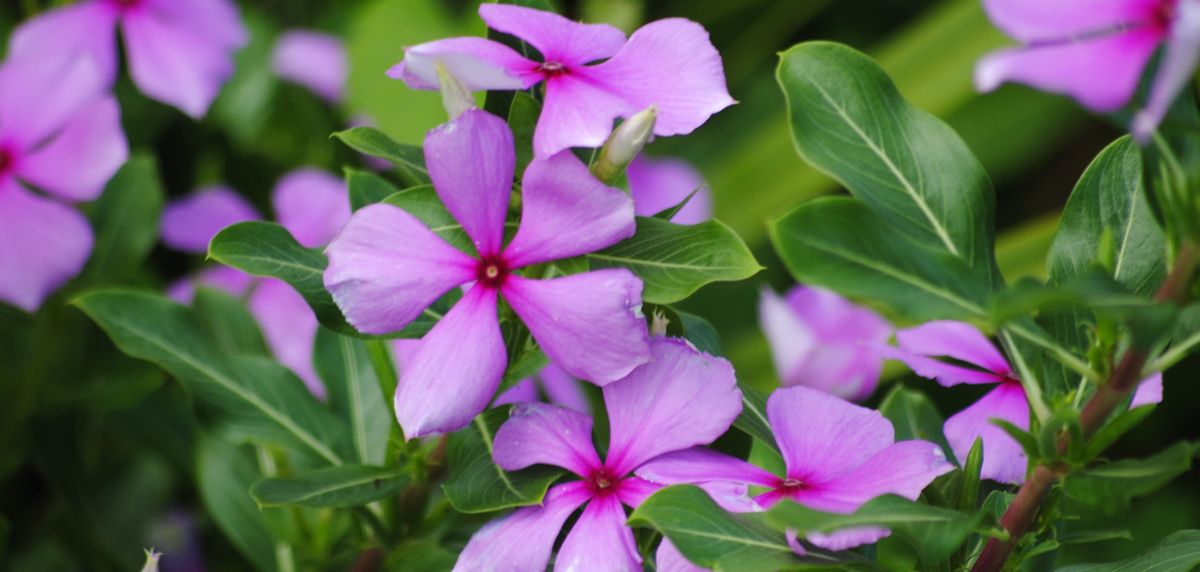
All parts of the plant are poisonous both to livestock and humans, but two common anti-cancer drugs can be derived from it: vincristine, which is used for chemotherapy for Hodkin’s lymphoma, and vinblastine, used to treat childhood leukemia. If you visit MAKNA’s website, you’ll find pictures of the plant gracing some of their articles, and although the meaning of the plant isn’t explicitly stated, some say the periwinkle logo is a symbol of hope for cancer patients.
Malaysia is blessed with natural forests, some of which are even older than the Amazon, and they contain a host of plants and animals not found elsewhere in the world. We’ve written on how potential cures of HIV were found in some trees in the forests of Sarawak, and there’s no reason to doubt that more trees that can potentially save lives are still awaiting discovery in our forests. What we should doubt, however, is whether we will find them in time.
- 374Shares
- Facebook288
- Twitter10
- LinkedIn13
- Email22
- WhatsApp41



